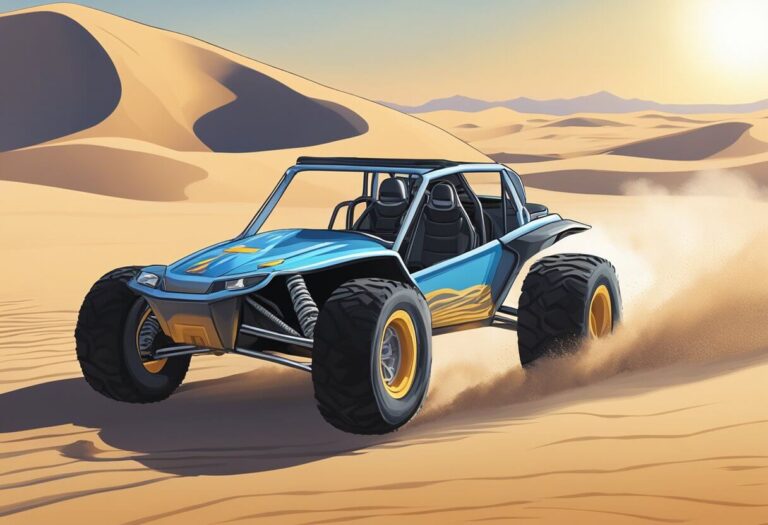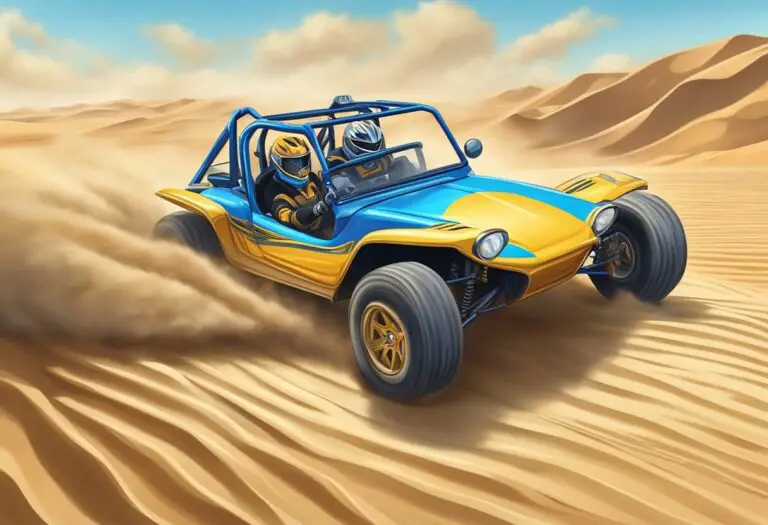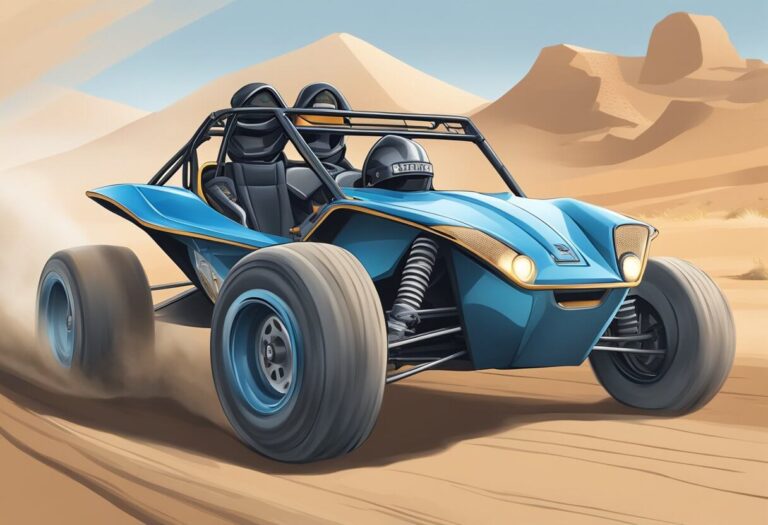Sand Rail Dune Buggy: The Ultimate Off-Road Vehicle
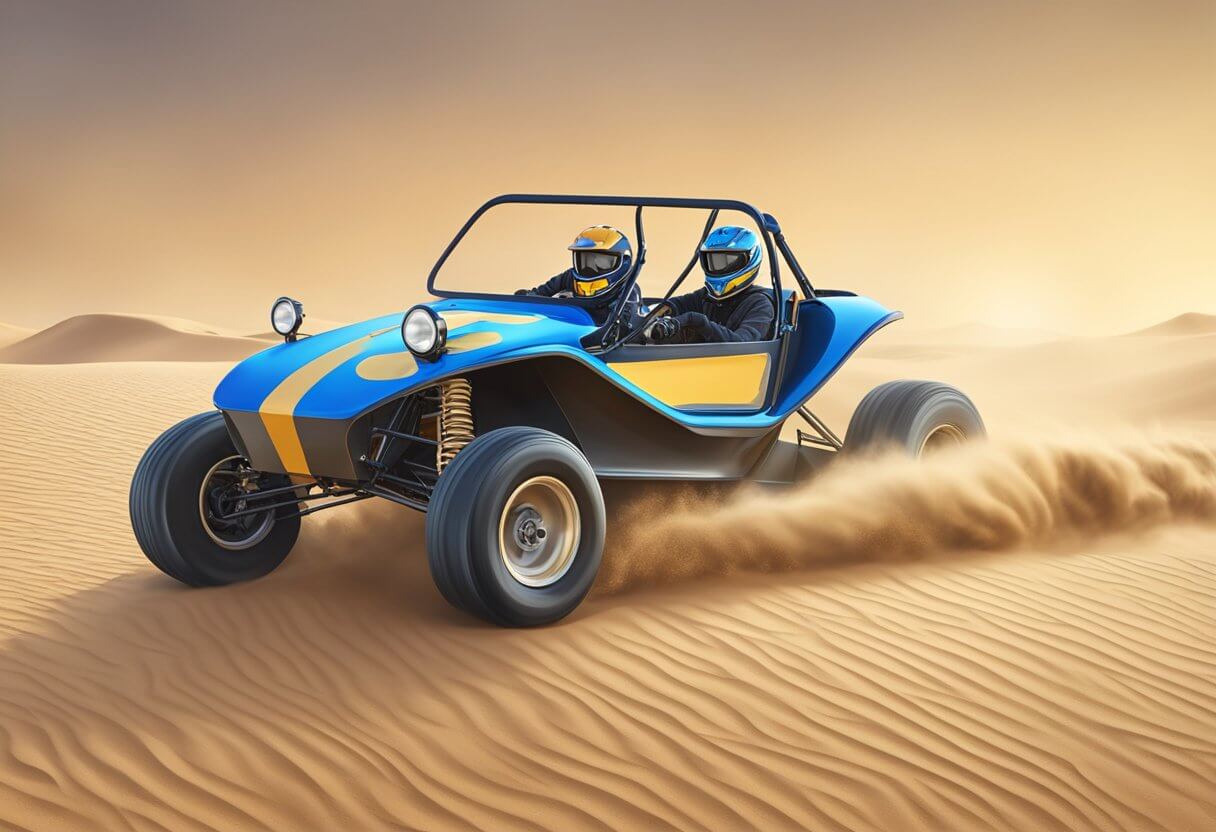
Off-roading enthusiasts are always seeking new ways to conquer rugged terrain. One exciting option is the sand rail dune buggy – a lightweight, open-frame vehicle built for maximum performance on sand dunes and beaches.
But are these thrilling machines street-legal and environmentally friendly? In short, no. While sand rails offer an adrenaline rush, they come with key legal and environmental drawbacks. In this post, we’ll explore the history and design of sand rails, along with the regulations, environmental impact, and responsible riding practices surrounding these unique off-road vehicles. Join us as we dig into the pros, cons, and realities of owning and operating a sand rail dune buggy.
History of Sand Rail Dune Buggies

Sand rail dune buggies have a rich history that parallels that of hot rods. The first dune buggies were built in the late 1960s by individuals who wanted to take their cars off-road. These early dune buggies were built using Volkswagen Beetle chassis and engines. They were lightweight and had wide wheels that made them perfect for driving on sand.
Over time, dune buggies evolved into sand rail dune buggies. Sand rails are lightweight off-road vehicles that are specifically built for traveling in sandy terrain. They are similar in some respects to dune buggies, but they are a different type of specialty vehicle. Sand rails are popularly operated on actual sand dunes.
Sand rail dune buggies were first built in the 1970s. They were designed to be more powerful and durable than the early dune buggies. Sand rails are typically built using a tubular frame that is lightweight and strong. They are also equipped with powerful engines that can generate a lot of horsepower.
Today, sand rail dune buggies are a popular choice for off-road enthusiasts who want to explore sandy terrain. They are often used for recreational purposes, such as sand dune racing and sand dune exploration. Sand rail dune buggies are also used by law enforcement agencies and military organizations for patrolling sandy terrain.
Design and Structure
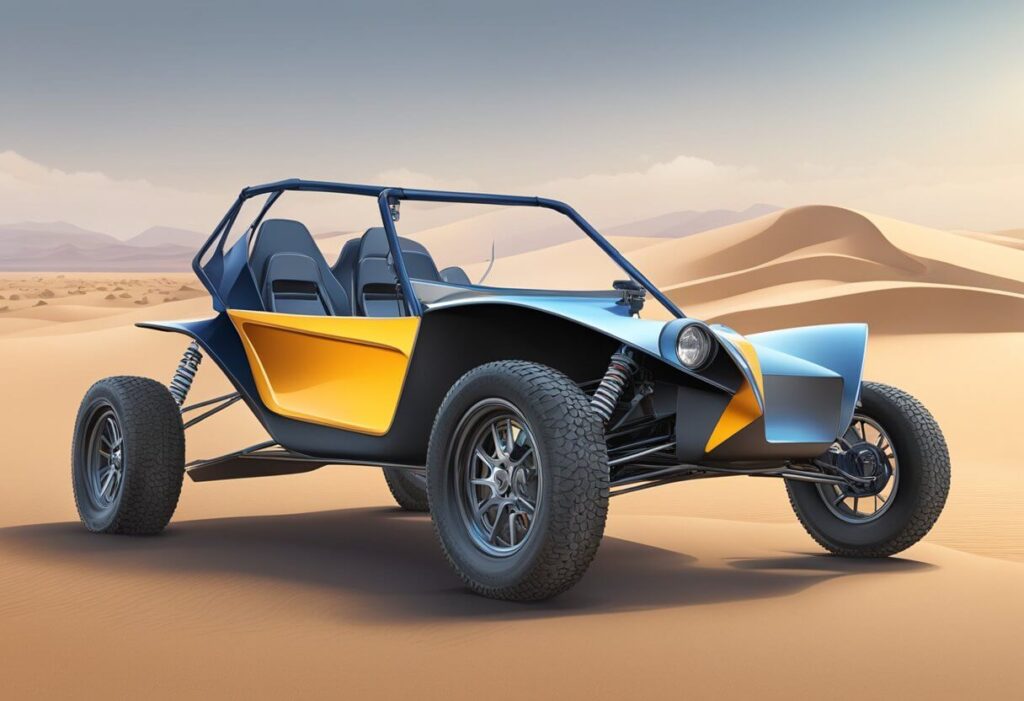
Sand rails are off-road vehicles that have been designed to navigate sand dunes. They are a type of dune buggy that is made for the purpose of off-roading. Sand rails come in different shapes and sizes, but they all share some common design features.
Chassis and Frame
The chassis and frame of a sand rail are one of the most important components of the vehicle. They provide the structural support and rigidity necessary to withstand the stresses of off-road driving. Sand rail frames are typically made of tubular steel, which is lightweight and strong. The frame is designed to be as low to the ground as possible to improve stability and handling.
Suspension Systems
The suspension system of a sand rail is another critical component that is designed to provide a smooth ride over rough terrain. Sand rails typically have long-travel suspension systems that allow the wheels to move up and down independently of the chassis. This helps to absorb shocks and bumps and keep the vehicle stable over uneven terrain. The suspension system also plays a crucial role in controlling the vehicle’s steering and handling.
Safety Features
Sand rails are designed to be safe and reliable off-road vehicles. They typically come equipped with a range of safety features, including roll cages, seat belts, and helmets. Roll cages are designed to protect the occupants of the vehicle in the event of a rollover or other accident. Seat belts are used to keep the occupants securely in their seats, while helmets provide additional protection for the head and neck.
Sand rails are also equipped with other safety features, such as fire extinguishers, first aid kits, and emergency communication systems. These features are designed to help ensure the safety of the driver and passengers in the event of an emergency.
Engine and Performance
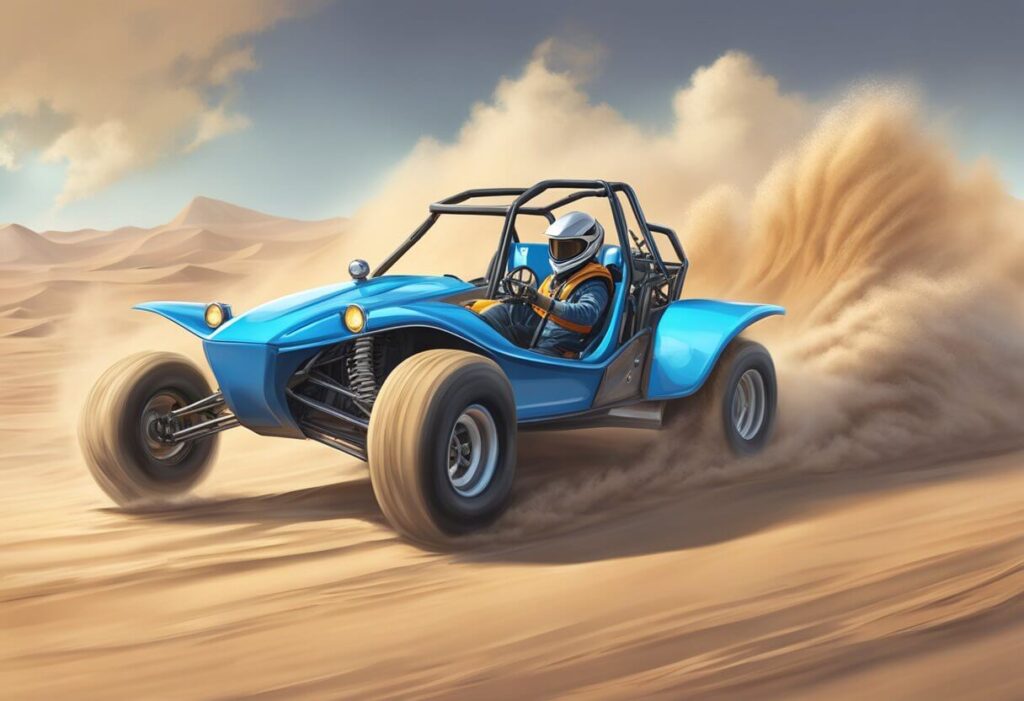
Engine Types
Sand rail dune buggies typically use air-cooled Volkswagen engines due to their reliability and simplicity. These engines come in various sizes and can be modified for increased performance. Other engine options include Subaru, Honda, and Suzuki engines, which offer more power and can be a good choice for those looking for a higher level of performance.
Performance Tuning
Performance tuning can be done to increase the power output of sand rail dune buggy engines. This can include modifications to the carburetor, ignition system, and camshaft. Upgrading to a larger engine or adding a turbocharger or supercharger can also significantly increase performance. It is important to note that any modifications should be done by a professional to ensure proper installation and performance.
Exhaust Systems
Exhaust systems are an important factor in the performance of sand rail dune buggy engines. A high-performance exhaust system can increase horsepower and torque by allowing the engine to breathe more efficiently. Options include header systems, mufflers, and exhaust tips. It is important to choose an exhaust system that is compatible with the engine and the sand rail dune buggy. A professional should install the exhaust system to ensure proper installation and performance.
Driving Techniques
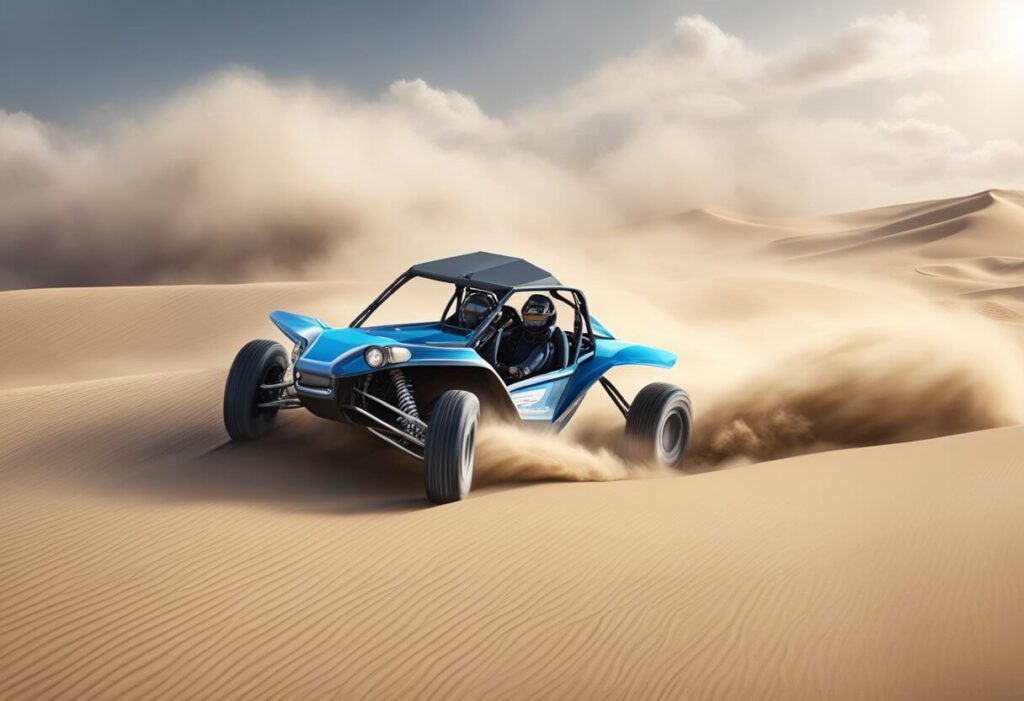
Sand rail dune buggies are designed to handle the challenging terrain of sand dunes. However, driving these vehicles requires specialized techniques that are different from driving on regular roads. Here are some essential driving techniques to help you navigate the dunes safely and with more control.
Navigating Dunes
When navigating dunes, it is essential to maintain a steady speed. Going too slow can cause the vehicle to get stuck, while going too fast can cause the vehicle to lose control. It is also important to keep the vehicle’s weight balanced to prevent it from tipping over. Drivers should always look ahead to anticipate changes in the terrain and adjust their driving accordingly.
Cornering and Control
Cornering in a sand rail dune buggy requires a different approach than in a regular vehicle. Drivers should slow down before entering a turn and steer with the front wheels. It is also important to use the throttle to maintain momentum and avoid getting stuck in the sand. Additionally, drivers should always keep their hands on the steering wheel to maintain control of the vehicle.
Recovery and Safety Precautions
In case the vehicle gets stuck, drivers should avoid spinning the wheels to prevent getting further stuck. Instead, they should slowly and steadily back out of the sand. It is also important to carry recovery equipment, such as a shovel and tow strap, in case of emergencies. Drivers should wear appropriate safety gear, such as helmets and seat belts, to protect themselves in case of accidents.
By following these driving techniques, drivers can enjoy the thrill of driving a sand rail dune buggy while staying safe and in control.
Customization and Upgrades
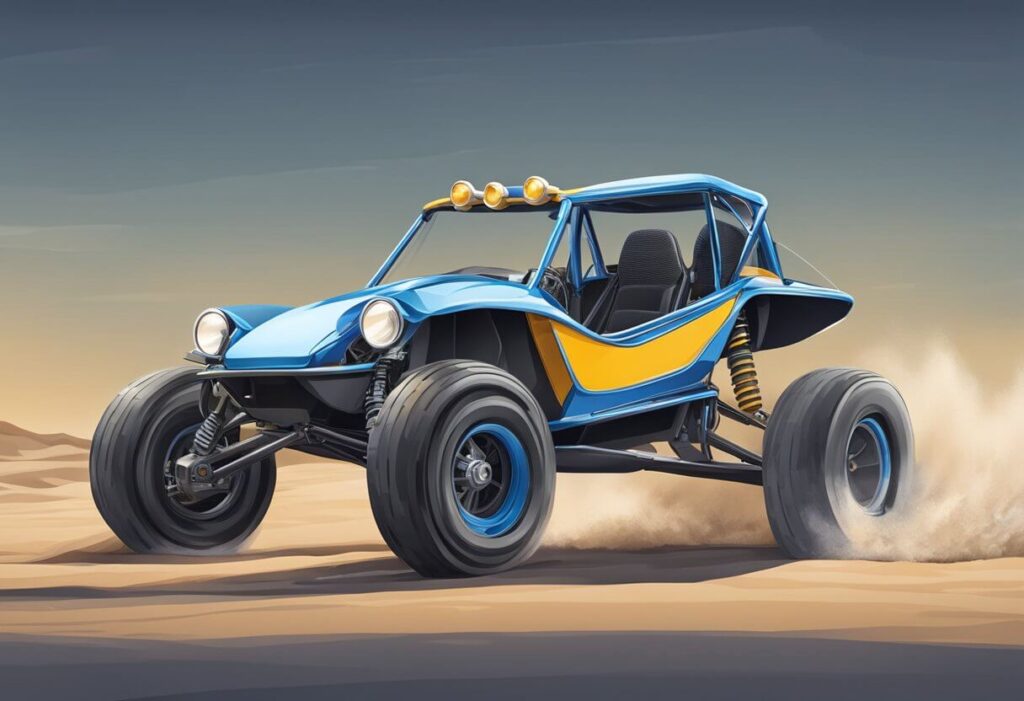
Sand rail dune buggies are designed to be customized and upgraded according to the owner’s preferences. There are several modifications that can be done to improve the appearance, performance, and functionality of the vehicle. Here are some of the most popular customization and upgrade options for sand rail dune buggies.
Aesthetic Modifications
Aesthetic modifications are done to improve the appearance of the sand rail dune buggy. These modifications are usually done to the exterior of the vehicle. Some of the popular aesthetic modifications include:
- Custom paint job
- Decals and stickers
- LED lighting
- Custom wheels and tires
- Custom seats and upholstery
Functional Upgrades
Functional upgrades are done to improve the performance and functionality of the sand rail dune buggy. These modifications are usually done to the engine, suspension, and other mechanical parts of the vehicle. Some of the popular functional upgrades include:
- High-performance engine upgrades
- Suspension upgrades
- Brake upgrades
- Transmission upgrades
- Exhaust system upgrades
DIY Custom Builds
DIY custom builds are done by sand rail dune buggy enthusiasts who want to create a unique vehicle that reflects their personality and interests. These builds are usually done using a combination of new and used parts. Some of the popular DIY custom builds include:
- Off-road sand rail dune buggies
- Street legal sand rail dune buggies
Overall, sand rail dune buggies offer a wide range of customization and upgrade options. Whether you want to improve the appearance, performance, or functionality of your vehicle, there are several modifications that can be done to meet your needs.
Legal and Environmental Considerations
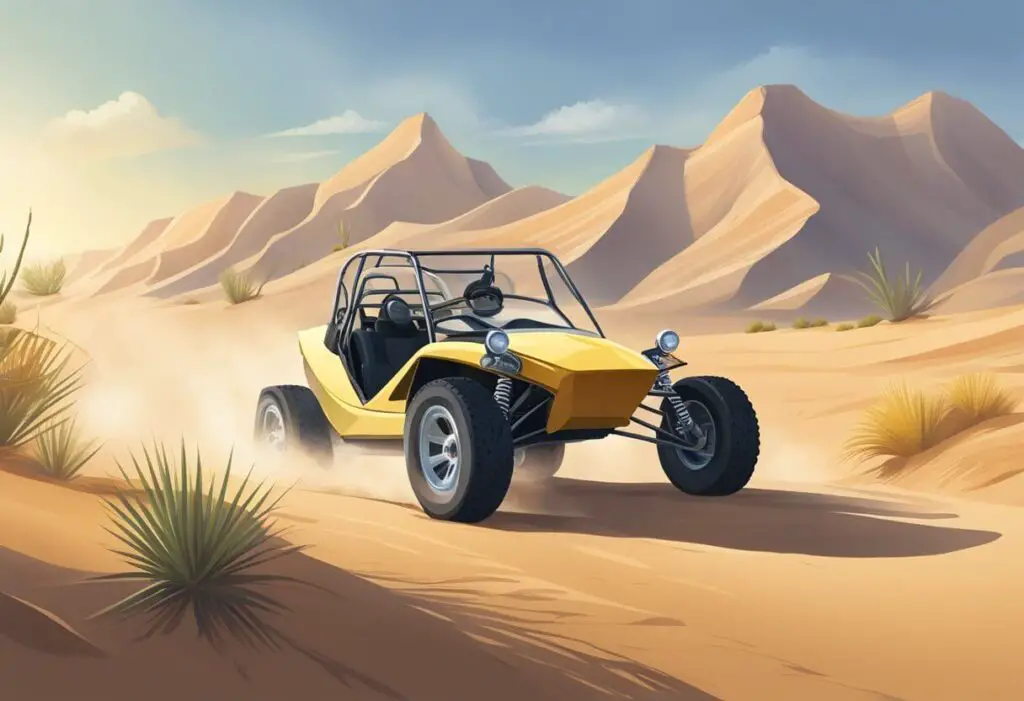
Regulations and Licensing
Before operating a sand rail dune buggy, it’s important to understand the regulations and licensing requirements in your area. In most states, sand rails are not street legal and can only be operated on sand dunes or other designated off-road areas. It’s important to check with local authorities and obtain any necessary permits or licenses before driving a sand rail.
In some states, sand rails may be modified to meet street legal requirements. This may include adding headlights, taillights, turn signals, and other safety features. It’s important to consult with a professional mechanic or vehicle inspector to ensure that the sand rail meets all necessary safety requirements.
Environmental Impact
Sand rails can have a significant impact on the environment, particularly on fragile sand dune ecosystems. It’s important to be mindful of the impact that sand rails can have on the environment and to take steps to minimize this impact.
One way to reduce the environmental impact of sand rails is to stay on designated trails and avoid driving in areas where vegetation or wildlife may be impacted. It’s also important to properly dispose of any trash or waste and to avoid disturbing any natural features or landmarks.
Responsible Riding Practices
In addition to complying with regulations and minimizing environmental impact, it’s important to practice responsible riding when operating a sand rail dune buggy. This includes wearing appropriate safety gear, such as helmets and seat belts, and driving at a safe and reasonable speed.
It’s also important to be aware of other riders and to avoid reckless or dangerous behavior. Sand rails can be powerful vehicles, and it’s important to use caution and good judgment when operating them.
By following these guidelines and practicing responsible riding, sand rail enthusiasts can enjoy this exciting activity while minimizing their impact on the environment and promoting safety on the trails.
Maintenance and Care

Routine Maintenance
Regular maintenance is crucial to keep a sand rail dune buggy running smoothly. Here are some routine maintenance tasks that should be performed regularly:
- Check the oil level and change the oil every 50 hours of operation or once a year, whichever comes first.
- Inspect the air filter every 10 hours of operation and replace it if it is dirty or damaged.
- Check the tire pressure before each ride and adjust it as necessary.
- Inspect the brakes and brake pads every 25 hours of operation or once a year, whichever comes first.
- Lubricate all moving parts, including the suspension, steering, and drivetrain, every 25 hours of operation or once a year, whichever comes first.
Troubleshooting Common Issues
Sand rail dune buggies can experience a variety of issues, but many of them can be resolved with simple troubleshooting. Here are some common issues and their solutions:
- Engine won’t start: Check the battery, spark plug, and fuel system.
- Engine runs poorly: Check the air filter, fuel system, and spark plug.
- Brakes are weak: Check the brake pads, calipers, and brake fluid level.
- Suspension is noisy: Check the shocks, bushings, and ball joints.
Long-Term Storage
If you plan to store your sand rail dune buggy for an extended period, there are some steps you should take to ensure it is properly stored:
- Drain the fuel tank and carburetor to prevent fuel from going stale.
- Remove the battery and store it in a cool, dry place.
- Lubricate all moving parts to prevent rust and corrosion.
- Cover the sand rail dune buggy with a breathable cover to prevent dust and debris from accumulating.
By following these maintenance and care tips, sand rail dune buggy owners can ensure their vehicles are always ready to hit the dunes.
Community and Culture

Sand rail dune buggies have a vibrant and active community built around them. From clubs and gatherings to racing and competitions, there are plenty of ways for enthusiasts to connect and share their passion for these off-road vehicles.
Clubs and Gatherings
There are numerous clubs and groups dedicated to sand rail dune buggies, with members coming together to share their knowledge, experiences, and love for the sport. These clubs often organize gatherings and events, providing opportunities for enthusiasts to meet and socialize with like-minded individuals.
Some notable sand rail dune buggy clubs include the American Sand Association, the National Sand Drag Association, and the Southern California Sand Drag Association.
Racing and Competitions
Sand rail dune buggies are built for speed and performance, making them popular in racing and competition circuits. There are various types of racing events for sand rail dune buggies, including sand drags, hill climbs, and desert races.
The National Sand Drag Association, for example, hosts multiple sand drag racing events throughout the year, attracting competitors from all over the country. These events are not only a great way to showcase the capabilities of sand rail dune buggies but also offer an exciting and thrilling experience for spectators.
Online Forums and Resources
In addition to clubs and events, there are also numerous online forums and resources dedicated to sand rail dune buggies. These forums provide a platform for enthusiasts to connect, share information, and seek advice from more experienced members.
Some popular sand rail dune buggy forums include Dune Buggy Archives, Sand Addiction Magazine, and Dune Buggies and Hot VWs. These resources offer a wealth of information on everything from building and customizing sand rail dune buggies to maintenance and repair tips.
Frequently Asked Questions
What are the key differences between a sand rail and a dune buggy?
Sand rails and dune buggies are both off-road vehicles designed for driving in sand, but they differ in their construction and purpose. Sand rails are typically built with a tubular frame and a rear-mounted engine, and they often have paddle tires for better traction in sand. Dune buggies, on the other hand, can have a variety of designs and are often built from a kit. They may have a front or rear engine, and they may be designed for use on a variety of terrains, not just sand.
How much does it typically cost to build a dune buggy from a kit?
The cost of building a dune buggy from a kit can vary widely depending on the quality of the kit and the level of customization desired. Basic kits can be purchased for as little as a few thousand dollars, while more advanced kits with high-end components can cost tens of thousands of dollars. In addition to the cost of the kit, builders will need to budget for tools, materials, and labor.
What should I consider when looking for a sand rail dune buggy for sale?
When looking for a sand rail dune buggy for sale, it’s important to consider the condition of the vehicle, the quality of its components, and the reputation of the seller. Buyers should inspect the vehicle for signs of wear and tear, rust, and damage, and they should ask for documentation of any repairs or upgrades. It’s also important to research the seller and read reviews from other buyers to ensure a positive buying experience.
Are there specific parts essential for upgrading a sand rail dune buggy?
The specific parts needed to upgrade a sand rail dune buggy will depend on the desired performance improvements. However, common upgrades include high-performance engines, suspension systems, and tires. It’s important to research the compatibility of different components and to work with a reputable mechanic or builder to ensure proper installation.
Can sand rail dune buggies be made street legal, and what does that entail?
In many states, sand rail dune buggies can be made street legal with the addition of certain safety features, such as turn signals, headlights, and brake lights. However, the specific requirements vary by state, and it’s important to research the local laws and regulations and to work with a knowledgeable mechanic or builder to ensure compliance.
What factors affect the value of a used dune buggy?
The value of a used dune buggy is affected by a variety of factors, including its age, condition, and level of customization. Vehicles that have been well-maintained and upgraded with high-quality components will generally command a higher price than those that have been poorly maintained or have outdated or low-quality components. Other factors that can affect value include the reputation of the seller, the rarity of the vehicle, and the demand for similar vehicles in the market.

